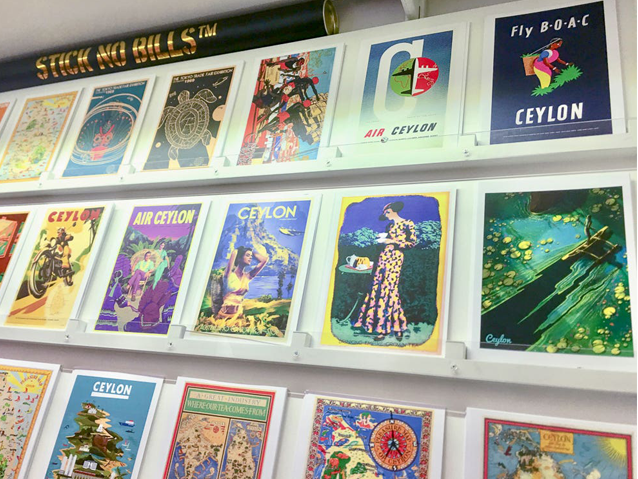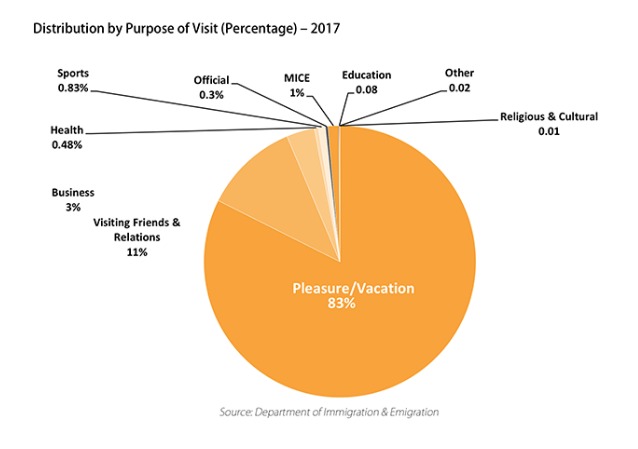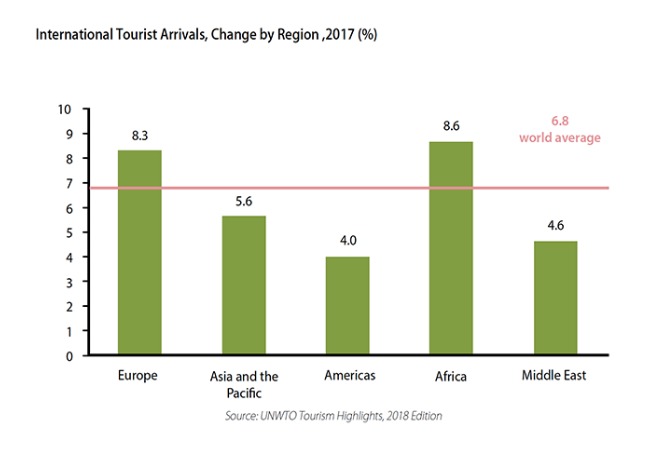 Credit: Ms Sue Huan
Credit: Ms Sue Huan
Not all tourists are the same. That's obvious. So let's get to know them a little better.
In this lesson we'll look at the different types, purposes and forms of tourism.
Why is this important? Because in the coming lessons, you will target specific subsets of these so as to attract them to your specific tourism business.
Economic impacts
The United Nations World Tourism Organization (UNWTO) categorizes tourists in three ways:
Domestic

Residents of a given country travelling only within that country. In Sri Lanka, this is likely to mean self-drive tourists, or those arriving by train.
The benefits of this type of tourist are that they generally understand the local languages, enjoy the local food and are fairly self-sufficient. Additionally, they potentially add many more total tourist nights to the economy, when measured over the period of a year.
And potentially the greatest benefit of all: they are likely to be recurring visitors and provide repeat business. A loyal domestic tourist is highly valuable.
Inbound

Non-residents travelling in a given country. In Sri Lanka, this means they will have arrived in the country by airplane or boat.
The benefits of this type of tourist are that they often enjoy and are prepared to pay for things that local people take for granted and often have access to greater financial resources, but they have needs and expectations which might be unfamiliar to Sri Lankan tourism businesses.
Outbound

Residents of one country travelling in another country. In the Sri Lankan context, this refers to Sri Lankan people travelling to other countries.
But what is the reason they are travelling in the first place?
Purpose of visit
TIn the Sri Lanka Tourism Authority's Annual Statistical Report, the Department of Immigration & Emigration reports nine different purposes of visit for tourists to Sri Lanka:
- Pleasure
- Visiting loved ones
- Business
- MICE (Meetings, Incentives, Conventions and Exhibitions)
- Sports
- Health
- Official
- Educational
If you are going to market your tourism business effectively to tourists, you need to know who they are and why they are here. You can only offer them what they want if you know what they want, right?
So let's dig in a bit and understand Sri Lanka's inbound tourism:

The above table shows that 82.4% of the tourists who visited the island in 2017 had come for pleasure - i.e. for holiday, recreation, touring, etc. 11.3% of tourists had come to visit friends and relatives followed by business-related travel (3.3%) and MICE (Meetings, Incentives, Conventions, Exhibitions) (1.3%) purposes. The proportion of tourists who came to Sri Lanka for sports and health purposes constituted 0.8% and 0.5% respectively. 0.3% of tourists reported coming for official purposes, while nearly 0.1% reported visiting for educational purposes.

Out of the total pleasure travellers, the highest proportion of tourists came from Western Europe at 32.4% followed by South Asia 23% and East Asia 22.7%. The proportion of leisure tourists from Eastern Europe, Middle East and Australasia constituted 8.8%, 5.1% and 3.4% respectively.
The largest proportion of business travellers were from South Asia (59.9%) followed by East Asia (20.8%) and Western Europe (11.7%). The highest proportion recorded for the purpose of visiting friends and relatives were from Western Europe (38.3%) followed by South Asia (20.9%) and North America (16.9%).
India as the major tourist source market, produced over 300,000 tourists to Sri Lanka in 2017 which is comparatively different from all the other markets that constituted 17.09% for pleasure, 16.48% for visiting friends and relatives, 48.4% for business-related travel and 27.4% for MICE, out of the total travellers who came for respective purposes.
Forms of tourism
You can also classify types of tourism based on places or activities. For instance, in Sri Lanka we know only too well that a lot of people love beach holidays. But some people think the idea of sun and salt on their skin is a terrible idea. They might prefer well-being holidays in shady and pampered surroundings with lots of massage and essential oil. Other outdoor types are attracted to adventure holidays, whether that's surfing the biggest waves they can find or hiking up remote mountains.
Sri Lanka has so much to offer the tourist: in addition to the above, there's also cultural and historical tourism, wildlife and game-viewing, religious pilgrimages...
And then, of course, there are subsets within each of the various types of tourism we've discussed. For instance, an outdoor adventure can encompass ecotourism, where people seek out experiences that allow them to enjoy nature in a sustainable way. Some tourists actually pay money to work at nature parks and preserves among the animals, for example those who choose to spend their holidays working in turtle sanctuaries...
The list is almost endless - Wikipedia's long list of entries has pages for more than 75 different forms of tourism!
Summary
There are 3 types of tourism:
- Domestic (residents of a given country travelling only within that country)
- Inbound (non-residents travelling in a given country)
- Outbound (residents of one country travelling in another country)
There are 9 purposes of tourism:
- Pleasure
- Visiting loved ones
- Business
- MICE (Meetings, Incentives, Conventions and Exhibitions)
- Sports
- Health
- Official
- Educational
There are a gazillion forms of tourism. Some of the most popular in Sri Lanka are:
- beach
- adventure
- well-being
- cultural
- religious
- wildlife